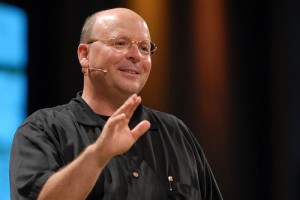
Christianity Today also featured two responses from N.T. Wright and Craig Keener on the importance of Historical Jesus studies. Scot replied to their responses on his blog last week.
McKnight’s article is a must-read for anyone interested in Gospels studies. McKnight’s resistance to Historical Jesus studies is not new. Other theologians and New Testament scholars have held this view, and some contemporary Gospels scholars who study the text from a literary angle also embrace this view.
Though McKnight’s proposal isn’t new, his article reads like something of an exposé, revealing to evangelicals what one must sacrifice in order to effectively engage by the rules of Historical Jesus studies. McKnight exposes the un-evangelical presuppositions that ground the Historical Jesus enterprise. He then points out the limits of historical reconstructionism of Jesus.
I think McKnight is right to point out the biased nature of historical Jesus research. Even orthodox Historical Jesus scholars feel they must play by the rules of the academy, which inevitably leads to a sidelining of the Gospel of John. Scot was gracious to stop by the blog today and answer a few questions about his cover story of Christianity Today.
Trevin Wax: Do you believe we have come to the end of the third quest?
Scot McKnight: Yes, the energy for the Third Quest has come to an end; to be sure, there will be some who continue the work and will mop up issues and take on these issues for themselves, but the focal energy of academic interest, that was at a premium in the 80s and 90s, has now been spent.
Trevin Wax: What are the signs that historical Jesus studies are waning?
Scot McKnight: The number of articles, books and significant proposals have now lost energy. The numbers who attend sessions at academic meetings on Historical Jesus have bottomed out.
Can you think of any major proposal about Jesus since the mid to late 90s? I can’t. Sure, Meier continues to plod along and Hengel proposed a big German book. But these are not attempts to construct a “new” (original) Jesus.
Trevin Wax: What was the main goal of the Quest for the Historical Jesus?
Scot McKnight: Historical Jesus research, as an enterprise, and that is my focus, and not just historical study, did all it could to see what Jesus’ individual sayings and events meant in their historical context.
It is important to hear what I am saying: the Historical Jesus enterprise had an agenda, namely, to find the real Jesus behind the layers of interpretation and over theologizing. The goal was to find the pre Christian and pre Creedal Jesus. It operated with the assumption that Jesus, as he originally was, was reshaped and expanded into more than he was during his lifetime.
So, the goal is to get back to what he was really like — before the Church started expanding him. That was its major intent and nearly all the books on Jesus proposed something “less than” what we find in the Gospels (Messiah, Son of God, etc) and Creeds (2nd person of Trinity).
Trevin Wax: What were the weaknesses of this approach?
Scot McKnight: The weaknesses were that historical methods can never get us to the fullness of a theological interpretation. Apart from Spirit and from Church, you can’t get to the Jesus of the Nicene Creed or the Jesus of John 1:1-14.
Its biggest weakness was that it confirmed its presupposition: namely, if you assume the Gospels and Creeds largely got too theological and overcooked the real Jesus, then you will no doubt find such a lessened Jesus through your historical methods.
Trevin Wax: What about the strengths?
The strengths were that it found perspectives and angles on the Gospels and on historical context that may not have been discovered otherwise.
Trevin Wax: What is the value of historical research in our study of the Gospels?
Scot McKnight: Historical studies, and in this case I don’t mean the Historical Jesus enterprise (which is to find the Jesus behind the theology), attempt to locate Jesus and the Gospels in their historical context. Jewish studies have helped us understand Jesus and have given us fresh insights into what Jesus was saying and doing.
Related Posts:
